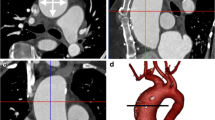Abstract
Magnetic resonance angiography (MRA) is a cost effective technique able to detect and quantify stenoses, provide sub-millimeter resolution with full arterial coverage, and show true vessel delineation without artifacts.The quality of images obtained with gadoliniumenhanced MRA depends on the gradient system, coil, sequence design, and contrast agent (volume, dose and injection rate). MRA protocols are evolving from standard k-space sampling (linear from the periphery or the center) to elliptic centric view ordering and to time-resolved MRA.
Finally, the gadolinium-based contrast agent Gd-BOPTA (gadobenate dimeglumine, MultiHance; Bracco Imaging, Milan, Italy) offers considerably greater imaging efficacy compared to conventional gadolinium chelates, because identical results can be obtained at lower doses.
In conclusion, MRA of the peripheral vasculature is a simple and fast technique, which permits evaluation of a large field of view without risk of radiation exposure.
Similar content being viewed by others
Author information
Authors and Affiliations
Corresponding author
Rights and permissions
About this article
Cite this article
Douek, P.C. MultiHance in MRA of peripheral vasculature. Eur Radiol Suppl 15 (Suppl 5), e17–e23 (2005). https://doi.org/10.1007/s10406-005-0162-1
Issue Date:
DOI: https://doi.org/10.1007/s10406-005-0162-1




